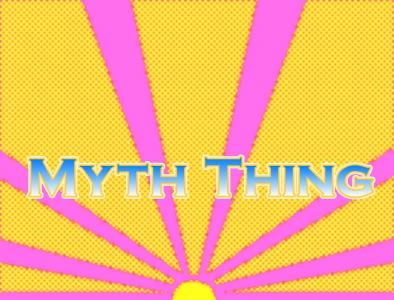Ritter/Zamet is pleased to present Myth Thing, a group exhibition of American and British artists that use the media of painting, drawing and photography to examine and reconsider themes of myth and archetype within various contemporary contexts. These artists’ starting points span the more intrinsic understanding of “myth” as a classical, historical or urban fiction conveying some kind of explanatory collective concept, belief or institution, through to a more Structuralist reading examining the notion of myth as a system of fluid and reconfigurable signs and signifiers that construct our collective understanding of the world and our place in it.
Erik Bakke’s epically scaled paintings use imagery drawn from current events, advertising, popular culture and the histories of a variety of cultures—not to posit theories—but to lay down articulation points across an expanse of passed time and varied circumstance between which the viewer can travel. Figures as diverse as Kaiser Wilhelm II, Malcolm X, Olive Oyl, John Walker Lindh, Ishi, Jessica Simpson or officers of the Mexican War (1846-1848) appear against vigorously drawn, flattened environments interweaved with layers of text and logos of Americana.
British artist and curator Rupert Goldsworthy has amassed a complex visual lexicon of brand signs appropriated from the worlds of high commerce, social and political groups. When viewed collectively, they not only provide an elaborate map of recent cultural iconography but also allow the signs to devolve their meanings to generate a profusion of new conceptual connections and associations. At Ritter/Zamet, Goldsworthy presents four photographic-collage panels: the two on the left show a completely arbitrary assortment of symbols, and the two on the right align these groups into pre-conceived contexts ranging from consumption, national and gender identity, religion and ideology.
East Village veteran Robert Hawkins’ surreal paintings and works on paper delve into the darker sides of human nature as expressed through genuine fables and fairy tales such as Peter Pan combined with his own absurd imaginary characters and narratives. Using a purposefully naïve painterly style, Hawkins formulates an innocently seductive facade that, like many myths, belies a more ominous, knotty subplot beneath the surface.
Juliet Jacobson creates elaborate, exuberantly erotic vignettes with a vital graphic dexterity. Interlacing gay porn imagery with clichéd symbols of sex and death, such as full-blooming roses, hearts, human skulls and coiled snakes, Jacobson’s drawings re-examine contemporary Romantic symbolism to invoke an air of Fin de Siècle decadence.
Eminent American artist couple McDermott & McGough’s recent paintings focus on the myth of 1950s domestic American suburbia and the repressed strain of homoeroticism that tinges the tightly-coded world of fraternities, movie culture and Tupperware parties. An abundance of trash visual and textual quotations from comic strips, advertisements and dime novels are pieced together into tightly constructed visual dramas, forcing the viewer to re-address the inherent ambiguity that lies at the very heart of our codified understanding of history, gender and sexuality.
Erik Bakke’s epically scaled paintings use imagery drawn from current events, advertising, popular culture and the histories of a variety of cultures—not to posit theories—but to lay down articulation points across an expanse of passed time and varied circumstance between which the viewer can travel. Figures as diverse as Kaiser Wilhelm II, Malcolm X, Olive Oyl, John Walker Lindh, Ishi, Jessica Simpson or officers of the Mexican War (1846-1848) appear against vigorously drawn, flattened environments interweaved with layers of text and logos of Americana.
British artist and curator Rupert Goldsworthy has amassed a complex visual lexicon of brand signs appropriated from the worlds of high commerce, social and political groups. When viewed collectively, they not only provide an elaborate map of recent cultural iconography but also allow the signs to devolve their meanings to generate a profusion of new conceptual connections and associations. At Ritter/Zamet, Goldsworthy presents four photographic-collage panels: the two on the left show a completely arbitrary assortment of symbols, and the two on the right align these groups into pre-conceived contexts ranging from consumption, national and gender identity, religion and ideology.
East Village veteran Robert Hawkins’ surreal paintings and works on paper delve into the darker sides of human nature as expressed through genuine fables and fairy tales such as Peter Pan combined with his own absurd imaginary characters and narratives. Using a purposefully naïve painterly style, Hawkins formulates an innocently seductive facade that, like many myths, belies a more ominous, knotty subplot beneath the surface.
Juliet Jacobson creates elaborate, exuberantly erotic vignettes with a vital graphic dexterity. Interlacing gay porn imagery with clichéd symbols of sex and death, such as full-blooming roses, hearts, human skulls and coiled snakes, Jacobson’s drawings re-examine contemporary Romantic symbolism to invoke an air of Fin de Siècle decadence.
Eminent American artist couple McDermott & McGough’s recent paintings focus on the myth of 1950s domestic American suburbia and the repressed strain of homoeroticism that tinges the tightly-coded world of fraternities, movie culture and Tupperware parties. An abundance of trash visual and textual quotations from comic strips, advertisements and dime novels are pieced together into tightly constructed visual dramas, forcing the viewer to re-address the inherent ambiguity that lies at the very heart of our codified understanding of history, gender and sexuality.
